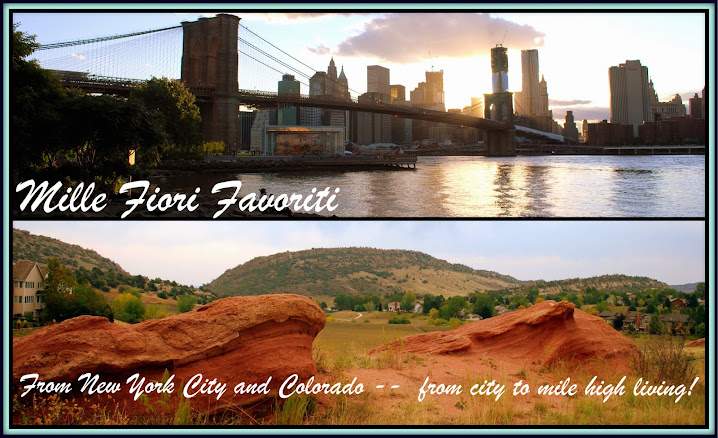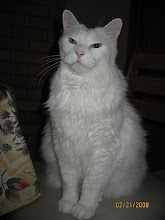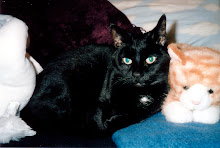The World Trade Center complex and the Twin Towers were once such a big part of the New York City downtown skyline. I believe over 50,000 people were employees or visitors in those buildings every day. My husband worked in 7 World Trade Center -- the last building of the complex, which was also the last building to fall on 9/11 due to damage and fires started by the collapse of Twin Tower One.
Luckily my husband was not in his office that day, as he was on an assignment, and no one from his office was hurt. He did personally know some of the people who were killed on that tragic day, however, and it took a long time of mourning for us to be able to bear the grief of that, and a world forever changed. Even now, seven years later, it is hard to look at the NY skyline and not see those buildings reaching up so proudly and majestically.
This diagram shows the layout of the World Trade Center buildings which were all destroyed by the collapse of the towers.

photo courtesy Fox News
The 16 acres of land where the World Trade Center once stood has become known as "Ground Zero."
Much of lower Manhattan was barricaded after 9/11 for the rescue/recovery phase and then the demolition and removal of the debris. Many businesses in the area were interrupted or permanently closed because of this. Over time more and more of the surrounding blocks were reopened and the area began to recover as resilient New Yorkers were determined to bring commerce and business back to lower Manhattan. Presently, Ground Zero is almost completely concealed by construction fences as the rebuilding has begun.
Luckily my husband was not in his office that day, as he was on an assignment, and no one from his office was hurt. He did personally know some of the people who were killed on that tragic day, however, and it took a long time of mourning for us to be able to bear the grief of that, and a world forever changed. Even now, seven years later, it is hard to look at the NY skyline and not see those buildings reaching up so proudly and majestically.
This diagram shows the layout of the World Trade Center buildings which were all destroyed by the collapse of the towers.

photo courtesy Fox News
The 16 acres of land where the World Trade Center once stood has become known as "Ground Zero."
Much of lower Manhattan was barricaded after 9/11 for the rescue/recovery phase and then the demolition and removal of the debris. Many businesses in the area were interrupted or permanently closed because of this. Over time more and more of the surrounding blocks were reopened and the area began to recover as resilient New Yorkers were determined to bring commerce and business back to lower Manhattan. Presently, Ground Zero is almost completely concealed by construction fences as the rebuilding has begun.


This is the first building that has been rebuilt, the new 7 World Trade Center. It is higher and thinner than the prior building and the exterior walls are almost all glass which makes it very reflective. The new building also has many new safety and environmental features

Below is a view of the outside staircase that survived Sept. 11, and remained the only above-ground remnant of the trade center complex. Its 37 stairs once connected the outdoor plaza outside the twin towers to the street below. It served as an escape route for countless survivors of the attack on the World Trade Center.
After years of debate over whether and how to preserve the structure, it's moving about 200 feet west on the site, to be stored until it can be installed at the Sept. 11 memorial.
Preservationists and survivors of the 2001 terrorist attack began campaigning years ago to leave the staircase where it was, but it sat in the middle of the footprint of one of five skyscrapers being built to replace the destroyed towers.
This staircase is especially significant to me as I use to wait at the bottom for my husband when he left his building when I visited him at work. It was near a coffee shop with outdoor tables, and a subway entrance was nearby where we would catch the train back to Brooklyn. I am pleased that it will be preserved as part of the National 9/11 Memorial Museum.

Here is an Earth Cam website of Ground Zero where you can follow the progress of the construction of the "Freedom Tower," the new 1,776-foot building that will be the centerpiece of the new World Trade Center.
Below is "10 House " Ladder 10 Engine 10 of the FDNY. It is located at 124 Liberty Street which is right across the street from the World Trade Center site. It lost 6 firemen on 9/11 and was severely damaged that day. It reopened on November 5, 2003.

Below is a plaque on the firehouse front wall that memorializes the six fallen firemen from this firehouse.

An impressive 56-foot long and 6 foot high Memorial Wall is located at the Ten House western side, and is "dedicated to those who fell and to those who carry on." It was a gift from the law firm Holland & Knight to honor the 343 members of the New York City Fire Department and a Holland & Knight partner who perished on 9-11-2001.
The following are pictures of the large bronze bas-relief memorial bolted to the side of the firehouse.
You can go here to see the plaque close up and in greater detail. To read all the fallen firemen's names on the plaque go here and click on the bottom plaque for close-ups.
It truly is a wonderful and inspiring memorial to these brave heroes. May we never forget them, and may they rest in peace.

In my next blog post, I'll end my day in lower Manhattan with a few miscellaneous photos of other points of interest that are in the area.
Thanks for all of your interest and kind comments. I hope all that have been reading will consider visiting New York City someday to see all of these sights yourself.

It truly is a wonderful and inspiring memorial to these brave heroes. May we never forget them, and may they rest in peace.

In my next blog post, I'll end my day in lower Manhattan with a few miscellaneous photos of other points of interest that are in the area.
Thanks for all of your interest and kind comments. I hope all that have been reading will consider visiting New York City someday to see all of these sights yourself.






















































